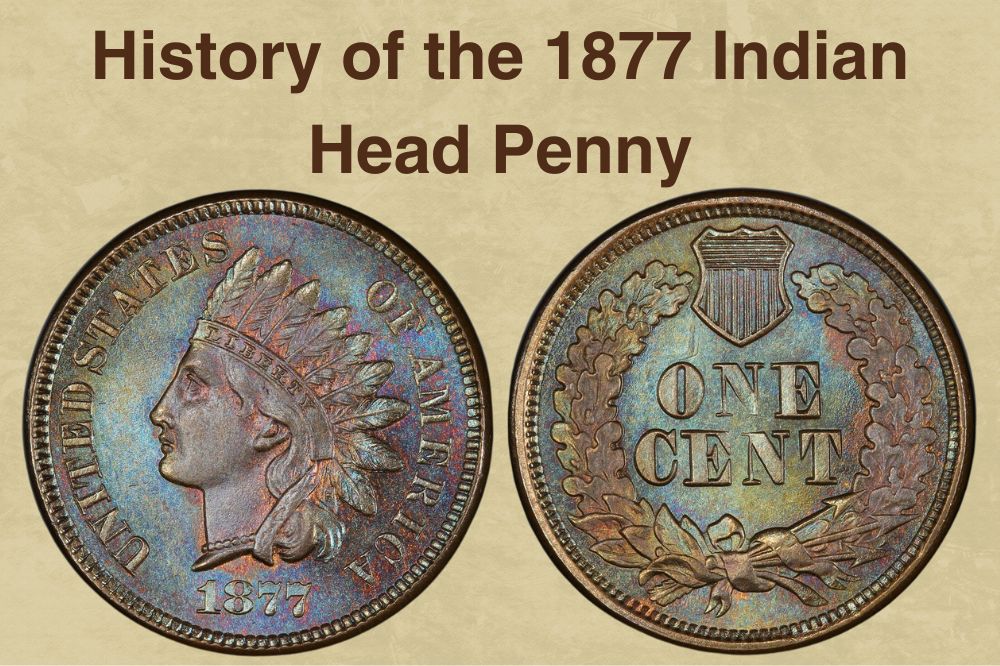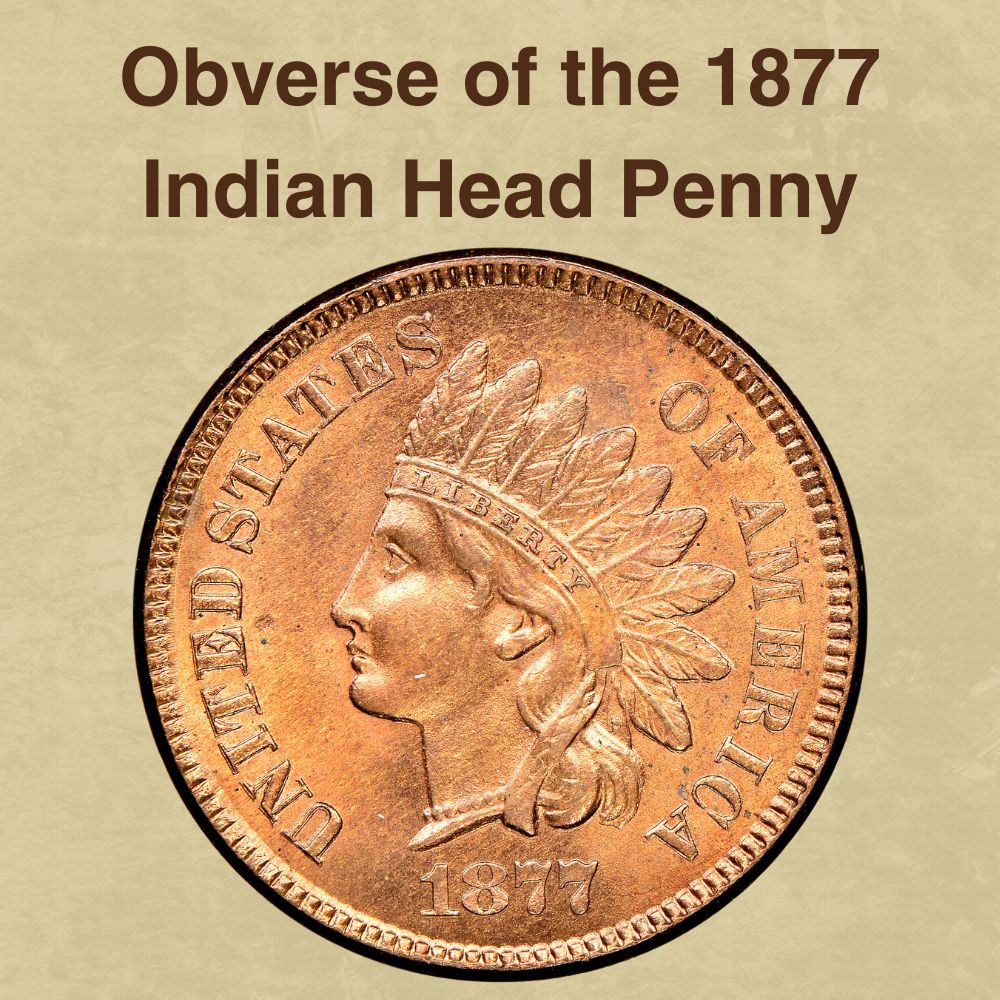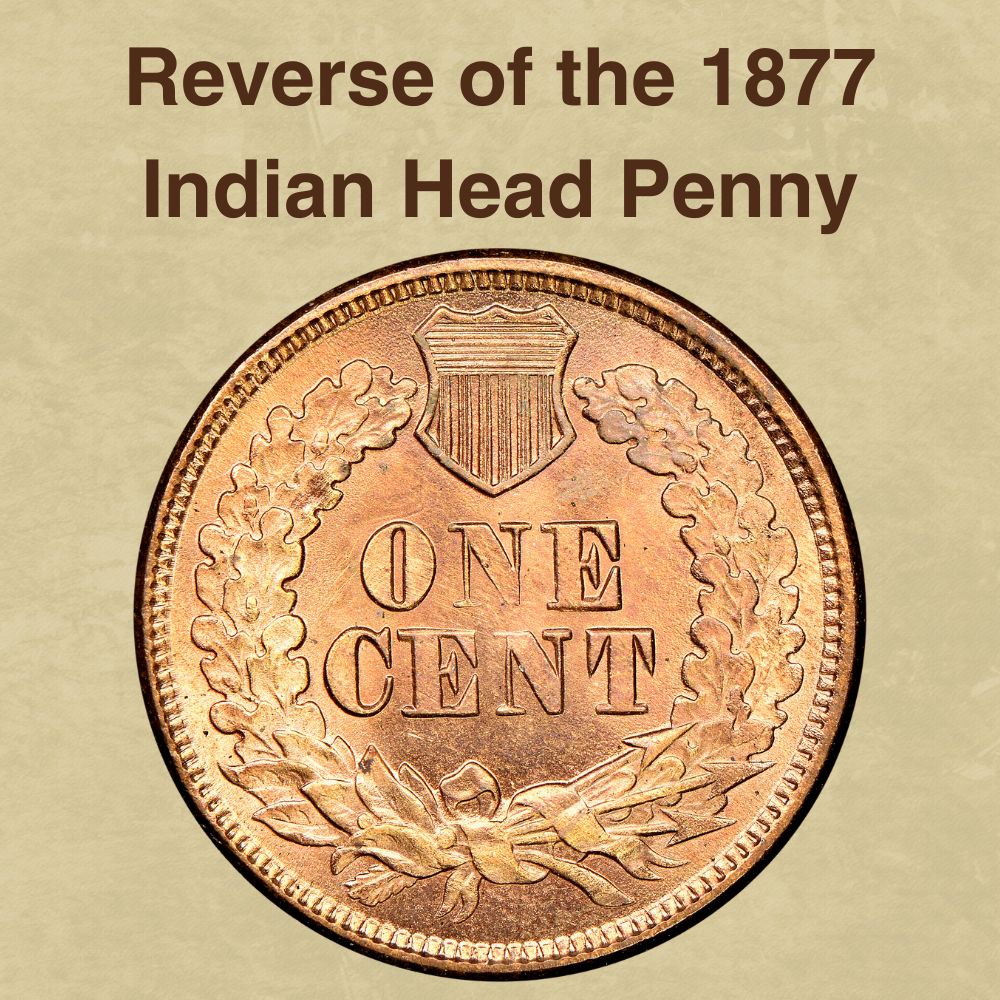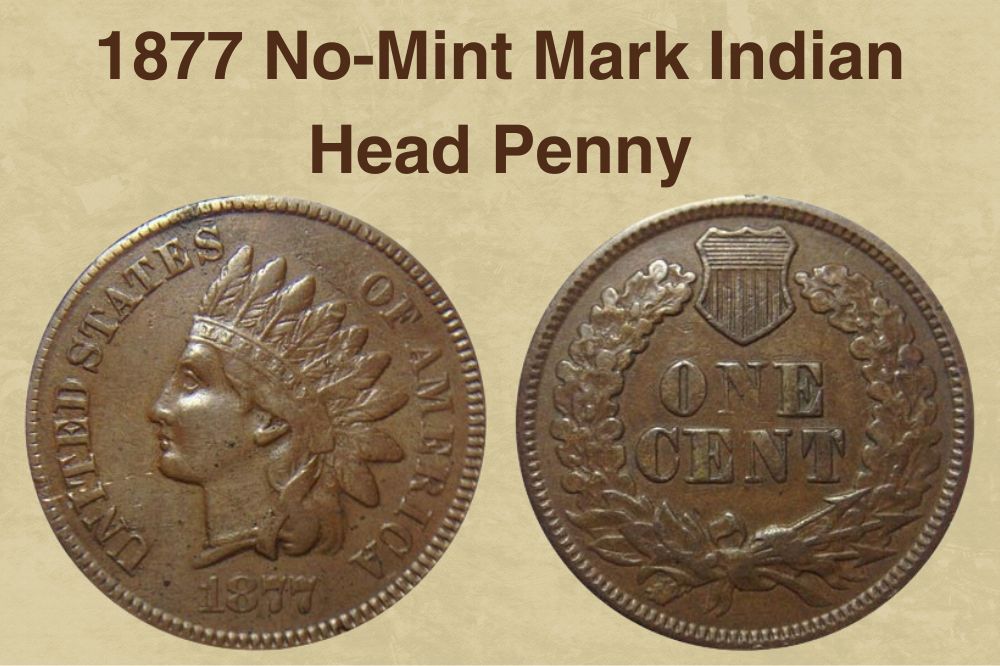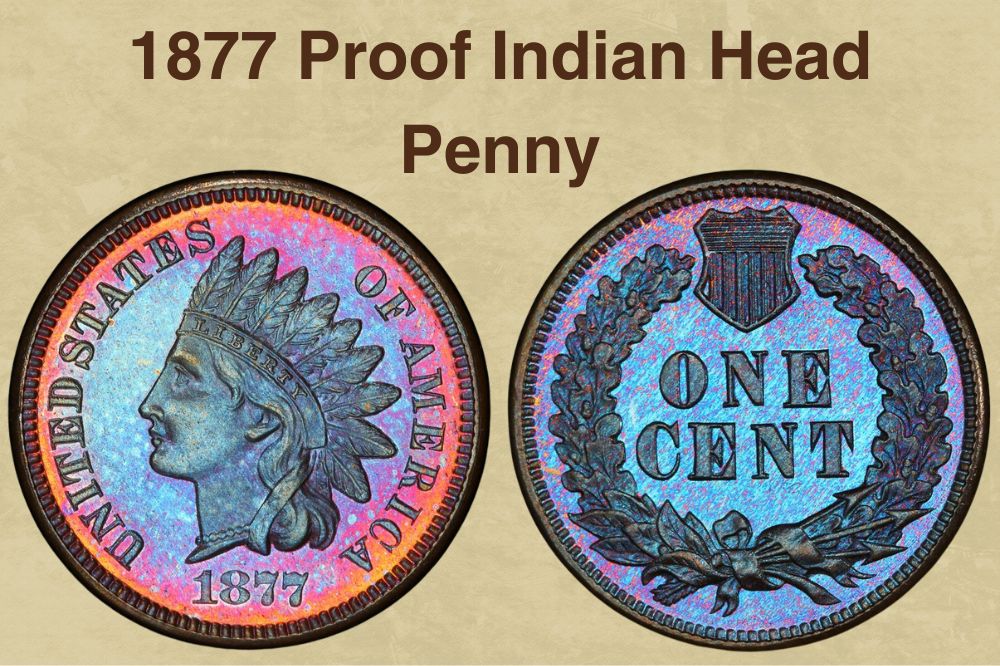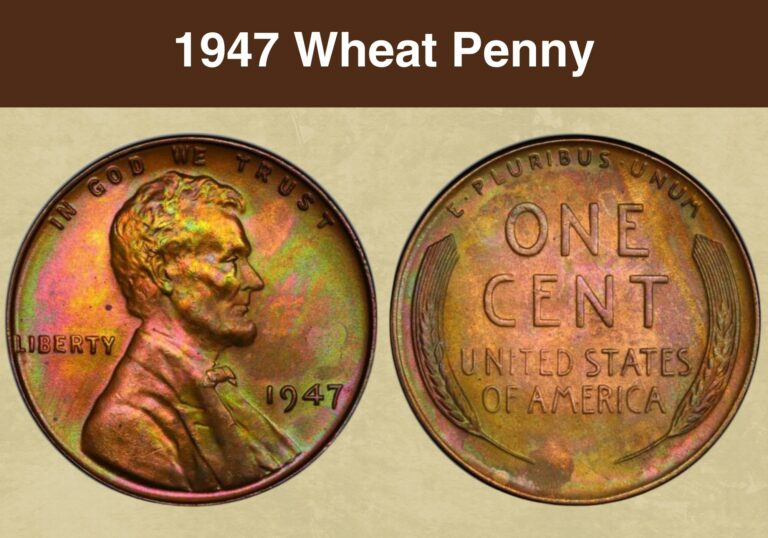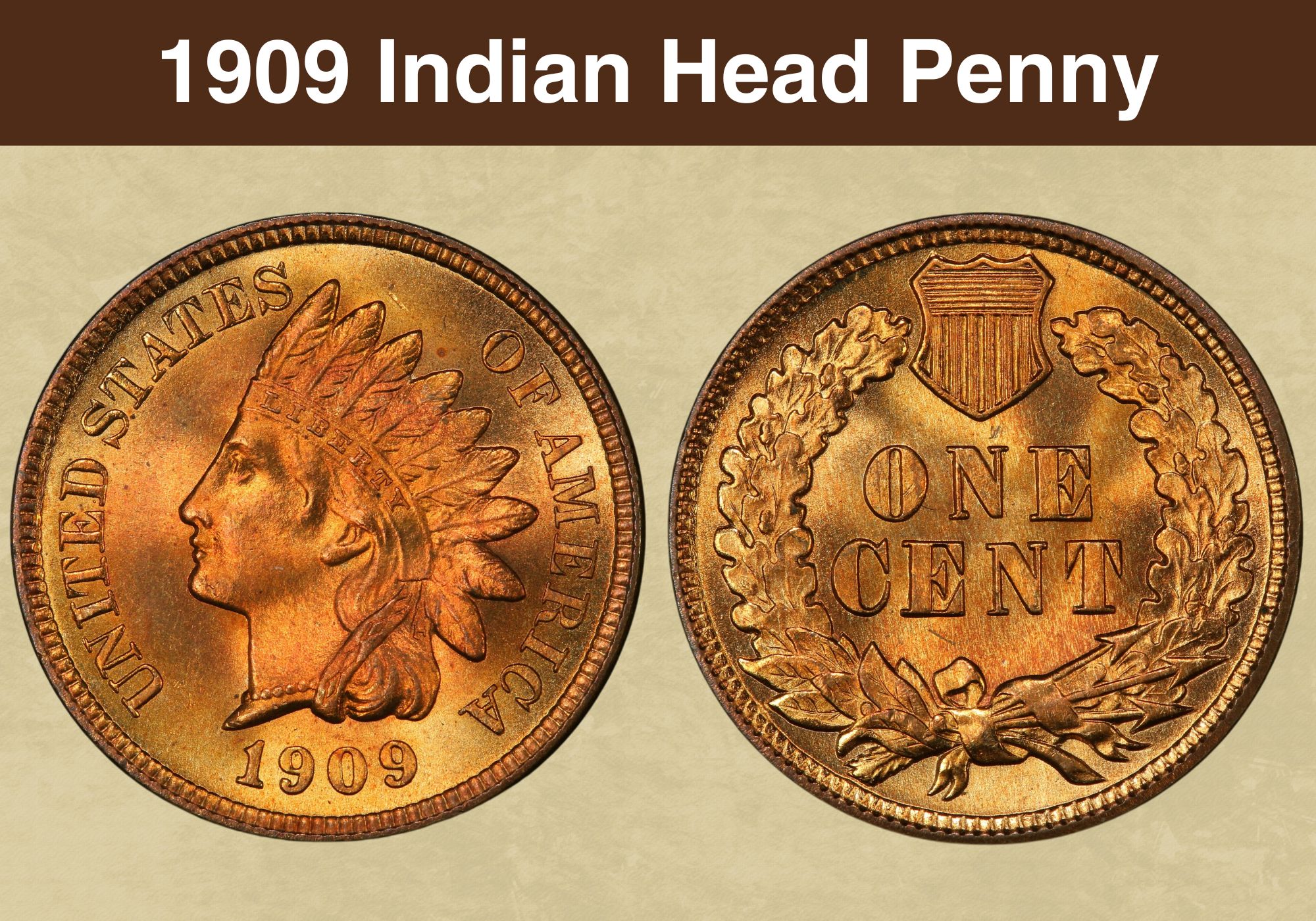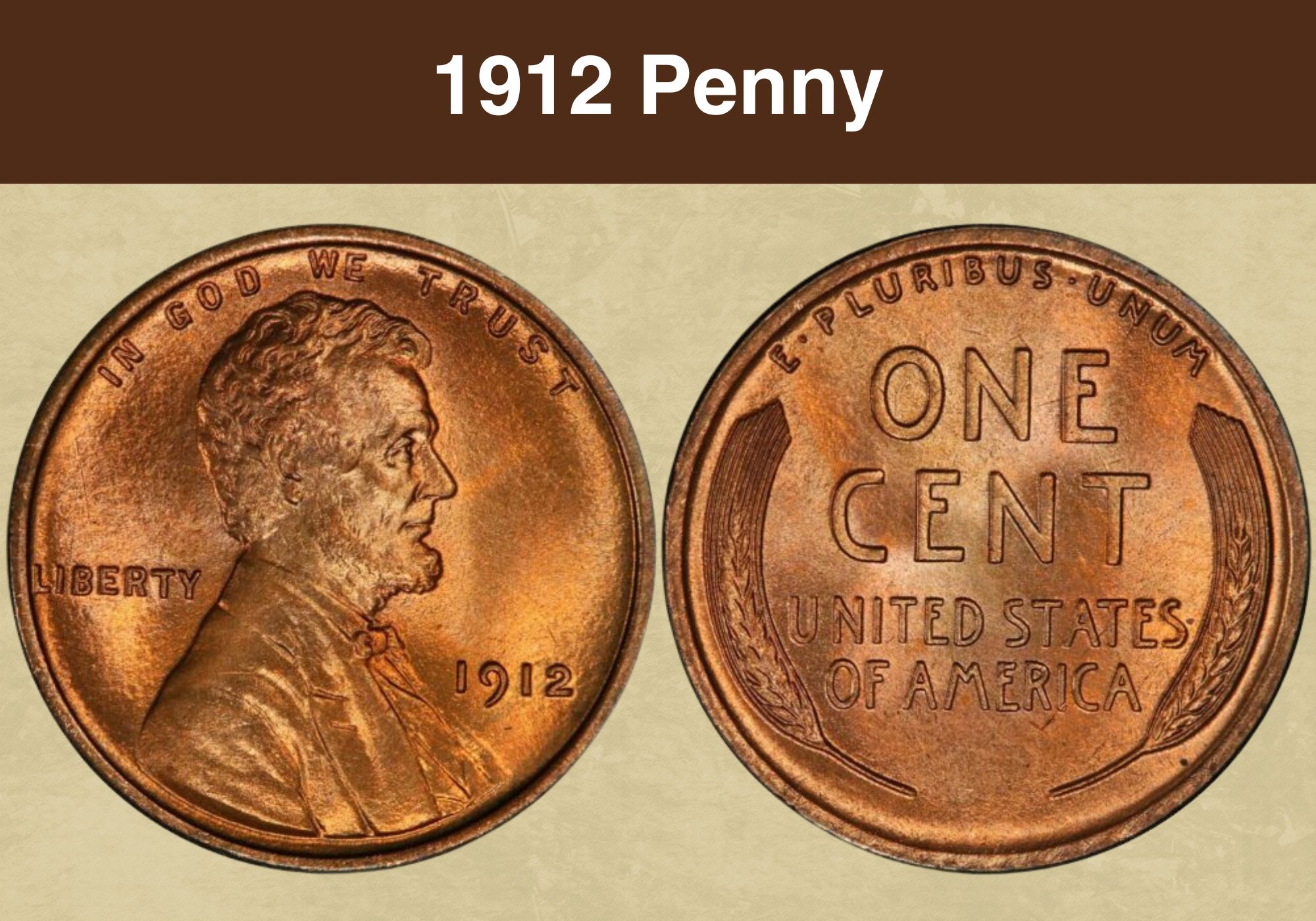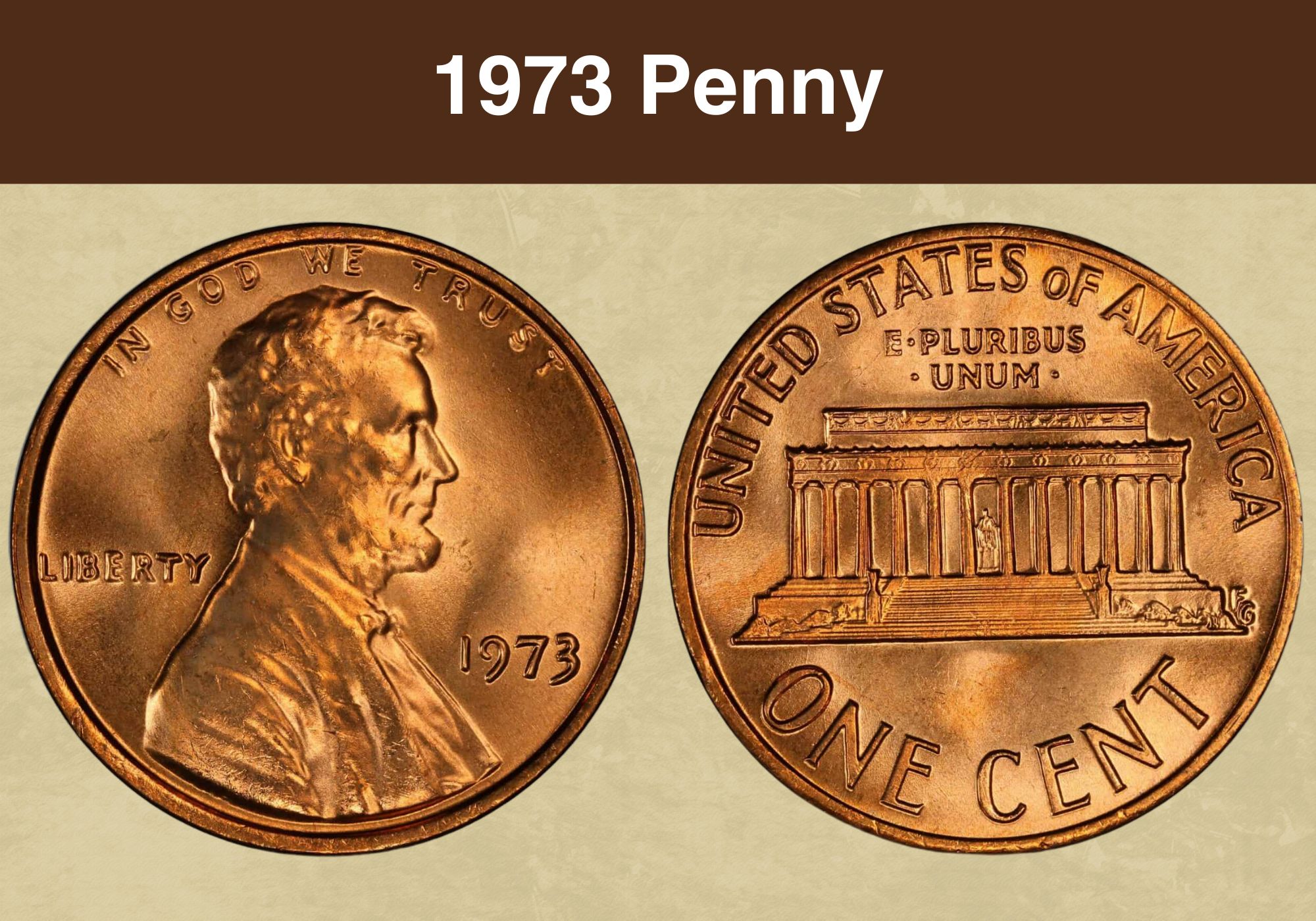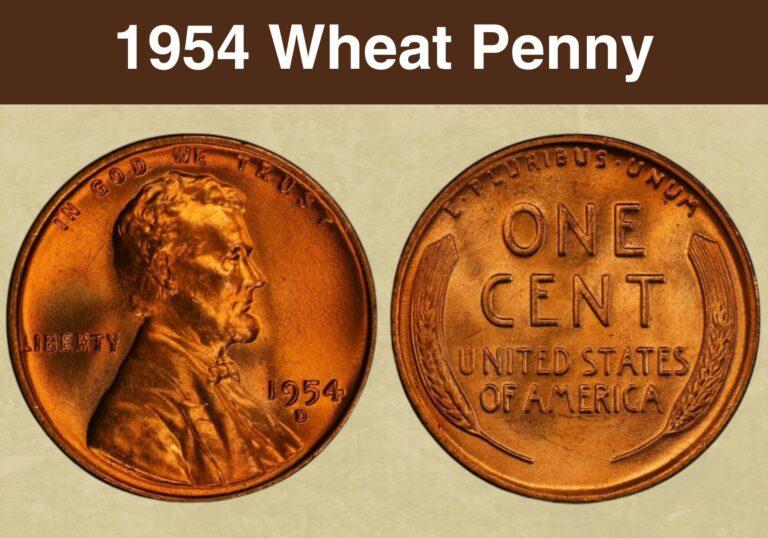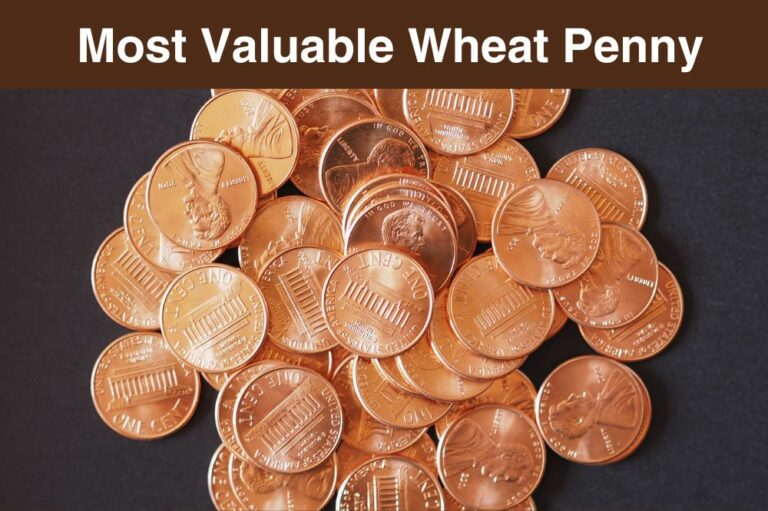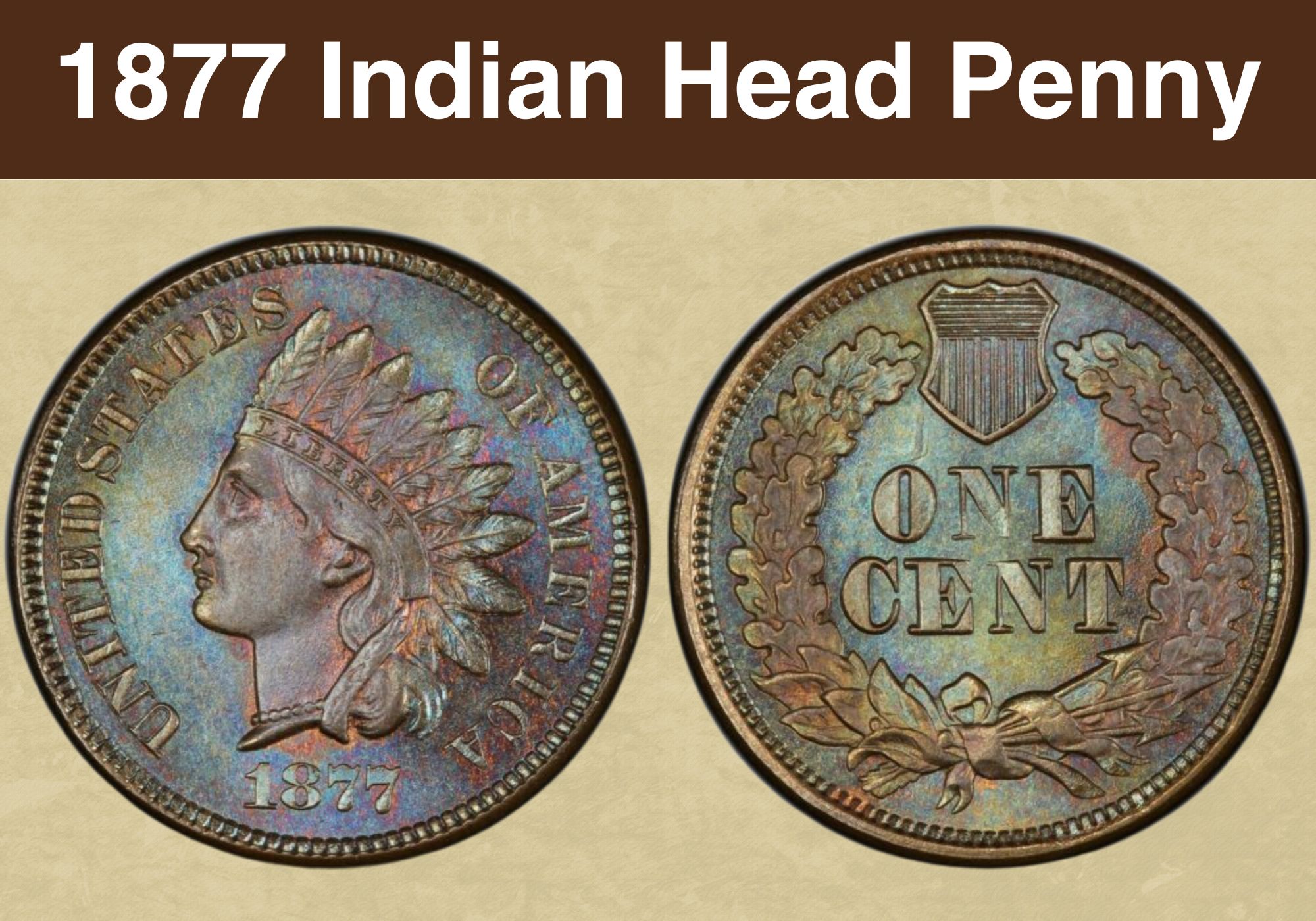
Coin Value Contents Table
- 1877 Indian Head Penny Value Chart
- History of the 1877 Indian Head Penny
- Features of the 1877 Indian Head Penny
- 1877 Indian Head Penny Grading
- 1877 Indian Head Penny Value Guides
- 1877 No-Mint Mark Indian Head Penny Value
- 1877 Proof Indian Head Penny Value
- Rare 1877 Indian Head Penny Errors List
- Where to Sell Your 1877 Indian head penny ?
- FAQ
Are you the lucky owner of an 1877 Indian head penny? Or are you considering adding this coin to your collection?
Indian head pennies from 1877 are not only very old, they also have the second-lowest mintage in the entire Indian Head penny series after the 1909 coins.
So, you should know right off the bat that 1877 is a key date and Indian head pennies from this year typically attract high premium values due to their rarity.
Adding this coin to your collection is an excellent idea; just be ready to pay thousands of dollars for a piece.
On the other hand, if you already own one, the 1877 Indian Head penny can make you a small fortune if you decide to sell it.
We created this guide to explain everything you need to know about the 1877 Indian Head penny value. We will explore the coin’s interesting history, features, errors and varieties and grading tips.
So, is the 1877 Indian head penny worth the money?
Let’s find out!
1877 Indian Head Penny Value Chart |
||||
| Mint Mark | Good | Fine | Extremely Fine | Uncirculated |
| 1877 No-Mint Mark Indian Head Penny Value | $585 | $1,175 | $2,650 | $4850 |
| 1877 Proof Indian Head Penny Value | – | – | – | $11,000 |
History of the 1877 Indian Head Penny
The 1877 Indian Head penny belongs to the Indian Head cent series, which the United States Mint struck from 859 to 1909.
The Indian Head penny replaced the Flying Eagle cent, which had been difficult and expensive to mint due to its high-relief design features; coins with a low-relief design are easier to mint.
The cent had been minted from 1793 to 1857 as a large copper coin. In the wake of the gold rush, the prices of copper began to increase drastically, necessitating that the Mint find alternative metal compositions.
Also, given that the cent and half-cent were very profitable, the Mint did not want to replace them entirely. By 1857, the Mint opted to change the cent’s composition to 88% copper and 12% nickel. The size of the cent was also reduced, resulting in a new coin known as the Flying Eagle cent.
The Flying Eagle cents resembled modern cents but were slightly thicker. These cents were also the first time in United States coinage history the Mint struck coins in copper and nickel.
The Flying Eagle cent turned out to be unpopular. The Mint found it difficult and costly to produce the coin and planned to replace it, preferably with a low-relief coin that would be profitable but easier to strike.
The design of a new coin began in 1858. With a lower profile, the new coin was named the Indian Head penny and would replace the Flying Eagle cent by 1859.
The country endured a tough economic climate in the wake if the American Civil War. One consequence of the chaos was hoarding nickel coins, a wartime metal that the government needed in sufficient amounts.
Upon the Mint’s recommendations, Congress passed the 1864 Coinage Act, which authorized a change in the metal composition from copper-nickel to a bronze alloy containing copper, zinc, and tin.
Then, slimmer bronze alloy cent was extremely popular, and the Mint responded by striking the coins in large numbers each year.
The year 1877 was a major exception. The Mint struck only 852,500 cents, a huge contrast from the high mintages of the previous years, where millions of cents were released into circulation year after year.
With fewer than a million cents to its name, 1877 became a key date, attracting collectors’ attention over the years. The only other date with a lower mintage is 1909, when only 309,000 Indian Head cent coins were struck, after which the Lincoln cent replaced the cent.
Also read: 12 Most Valuable Lincoln Penny Worth Money
Features of the 1877 Indian Head Penny
In this section, we will get familiar with the unique attributes of the 1877 Indian Head penny. Understanding your coin’s features helps you know what to look for in an Indian head penny worth money.
The Obverse of the 1877 Indian Head Penny
The chief engraver at the Philadelphia Mint, James Barton Longacre, designed the Indian Head penny.
On the obverse of the 1877 Indian head penny is a left-facing portrait of Lady Liberty. She is adorned in a headdress traditionally worn by Native Americans.
Several legends attempt to explain Lady Liberty’s image on the Indian Head penny. Some people speculated that the portrait was Longacre’s twelve-year-old daughter.
But the coin’s designer dismissed these speculations, saying the image was actually inspired by the Crouching Venus.
Legends aside, the portrait embodies a Caucasian woman dressed in a Native Indian traditional headgear. A ribbon with the inscription LIBERTY is tied around her forehead and mingles with her flowing hair.
Lady Liberty also spots a beaded necklace. Upon closer look, you will notice the letter L hidden in Lady Liberty’s hair.
The words UNITED STATES appear along the inner collar on the left, while the remaining words OF AMERICA appear on the coin’s right side.
The year date, 1877, is shown at the base, while small denticles adorn the coin’s diameter
The Reverse of the 1877 Indian Head Penny
On the reverse, you will find some meaningful symbols. The two oak branches, daintily tied together with a ribbon, are the most prominent feature.
The early Indian Head cents spotted laurel wreath, but the oak leaves later replaced this. You will also notice three arrows appearing in the ribbon. These represent freedom from the constraints of the colonialists and a readiness to defend the country’s hard-fought liberty.
The oak leaves open up to a small shield at the top of the coin. The shield has thirteen horizontal stripes and thirteen vertical stripes representing the first thirteen states to gain independence.
The coin’s denomination, ONE CENT, appears boldly in the center of the coin. The coin’s diameter is also decorated in denticles.
Other Features of the 1877 Indian Head Penny
The 1877 Indian Head penny comprises 95% copper and 5% tin and zinc.
The plain-edged coin measures 19.00 millimeters in diameter and weighs 3.11 grams, much lighter than the early copper-nickel cents.
Only the Philadelphia Mint produced Indian Head pennies in 1877, so these coins do not have a mint mark.
Also read: 13 Most Valuable Wheat Penny Worth Money
1877 Indian Head Penny Grading
Grading entails examining a coin for signs of wear. While it is recommended that you have a professional grade your coins, you can also get a rough estimate by examining the coin’s condition yourself.
Since 1877 Indian Head pennies are so old, grading them is solely dependent on their condition. Uncirculated cents from this year are notoriously hard to find, but such a coin must have a full, complete luster to qualify as uncirculated.
Most of the 1877 Indian head pennies you will find are circulated and in ‘’good’’ condition. Most of the imagery will be worn out, and the texture will be smooth as a result of many years of use.
| # | Grade |
|---|---|
| 1 | Basal State-1 |
| 2 | Fair |
| 3 | Very Fair |
| 4, 5, 6 | Good |
| 7, 8, 10 | Very Good |
| 12, 15 | Fine |
| 20, 30 | Very Fine |
| 40 | Extremely Fine |
| 50 | About Uncirculated |
| 60 | Mint State |
| 65 | Mint State |
| 70 | Mint State |
Please check our grading guides to know your coin scale, It’s the necessary step to know the exact value of your coin.
Check out now: How to Grade Indian Head Penny?
1877 Indian Head Penny Value Guides
Is the 1877 Indian Head penny worth money?
The answer is a resounding YES!
If you own an 1877 Indian Head cent or discover one, it is definitely worth good money.
There are only two varieties of the 1877 Indian Head penny. These are the:
- 1877 No-Mint Mark Indian Head Penny
- 1877 Proof Indian Head Penny
1877 No-Mint Mark Indian Head Penny Value
Only the Philadelphia mint existed at this time, and in 1877, it only struck 852,500 Indian Head cents, the second-lowest mintage in the entire series.
To give you some perspective, the previous year, the Mint had struck about a million cents and 5 million in 1878.
The historically low mintage of 1877 is attributed to the tough economic times the country endured that year.
According to numismatic researchers, there is a possibility that the mintage was much lower than the conventionally accepted figure, making 1877 Indian Head cents extremely rare.
The few existing examples are thoroughly worn, and fully red, uncirculated specimens from 1877 are unheard of. Consider yourself very lucky if you come across such a coin; it could be worth a fortune!
So rare and in demand are 1877 Indian Head pennies that even extremely worn pennies will fetch a significant amount.
For a brown cent, you can expect between $585 and $4,600 for a circulated example, depending on the coin’s condition.
Uncirculated 1877 Indian Head pennies are extremely rare and sell at a premium. A brown example graded MS60 will fetch as much as $4,850, an MS65 will bring up to $11,500, while an extremely scarce gem-state MS66 has an asking price of up to $20,000.
Fully red specimens are exceedingly rare; perhaps one or two known examples exist. Such a piece can fetch at least $125,000 at grade MS66.
According to the Professional Coin Grading Service, the most expensive red gem quality 1877 Indian Head cent was sold for an astonishing $149,500 at a 2007 Heritage Auctions sale.
1877 Proof Indian Head Penny Value
The mint at Philadelphia struck about 900 proof Indian Head pennies in 1877, although the exact amount of these coins is unknown.
The proof pennies from 1877 are not necessarily rare, but they are in high demand due to the scarcity of Mint State pennies from this year.
You can expect between $3,000 and $11,000 depending on the condition of the 1877-proof Indian Head penny.
Cameo examples are extremely rare. A piece graded PF66 sold for an impressive $36,000 in a 2020 auction.
Also read: 17 Most Valuable Indian Head Penny Worth Money
Rare 1877 Indian Head Penny Errors List
Errors are coins with a peculiar appearance that makes them stand out from the lot.
Mistakes are part of the minting process. Although the majority will be perfect, some coins will come out with flaws and oddities.
If you come across an odd-looking 1877 Indian Head penny, don’t toss it; this could be valuable.
There aren’t many 1877 Indian head penny errors, but the known few can fetch thousands of dollars.
Let’s look at some Indian Head penny errors from 1877 worth money.
1877 Off-Center Strike Indian Head Penny Error
As the name suggests, an off-center strike occurs when a misaligned die strikes the planchet in a way that the design appears away from the center.
The value of an off-center error depends on the ‘’off’’ percentage. The greater the percentage, the more valuable the coin.
An 1877 Indian head penny with a 15% off-center strike will fetch up to $130, while one with a 50% off-center strike will earn as much as $300.
1877 Strike-Through Indian Head Penny Error
Strike-through errors are quite common among 1877 Indian Head pennies.
This error occurs when a foreign object comes between the planchet (coin) and dies.
The object can be anything from grease, debris, dust particles, etc. and will obstruct the die from fully transferring the design onto the planchet, creating a strike-through error.
A strike-through error can be worth nothing or thousands, depending on the extent of the obstruction. Bigger obstructions in which large portions of the design elements are missing are more valuable as long as the date is intact.
You can expect between $1,000 and $2,000 for an 1877 Indian head penny with a strike-through error.
Also read: 11 Most Valuable Wheat Penny Errors
Where to Sell Your 1877 Indian head penny ?
Now that you know the value of your coins, do you know where to sell those coins online easily? Don’t worry, I’ve compiled a list of these sites, including their introduction, pros, and cons.
Check out now: Best Places To Sell Coins Online (Pros & Cons)
FAQ
Why is the 1877 Indian head penny so valuable?
The 1877 Indian Head penny is a ‘’key date’’ because it is the second rarest Indian Head penny after the ones produced in 1909. In 1877, the Mint only struck 852,500 cents compared to the millions of cents struck in the previous and preceding years. This coin’s extremely rarity makes it highly valuable and desirable among collectors.
How can you tell if an 1877 penny is real?
Because of its popularity, the 1877 Indian Head penny is prone to counterfeiting. The best way to tell if one is real is to turn the coin over on the reverse and examine the word ONE CENT. Check the bottom right of the letter N in ONE and the top left of the N in CENT. These specific areas should have a weaker strike than the rest of the letters. In counterfeit 1877 pennies, all letters in ONE CENT generally appear well-struck.
Can you find any 1877 Indian head pennies today?
Indian Head pennies from 1877 are notoriously rare, especially in uncirculated condition. You can still find these coins today, but they will most likely be very worn, with all the luster stripped away and most of the details dulled out.

